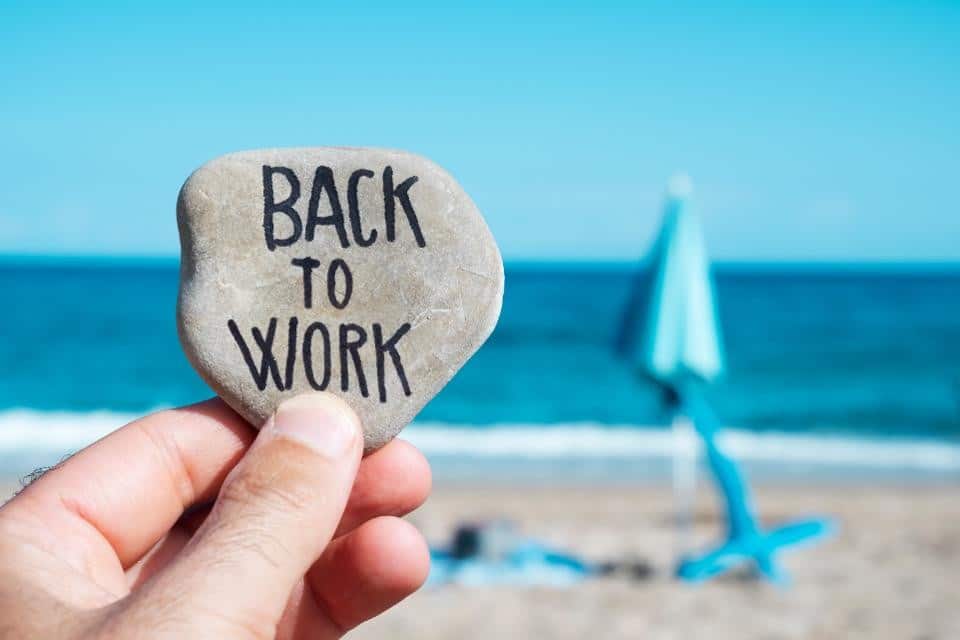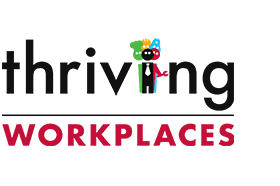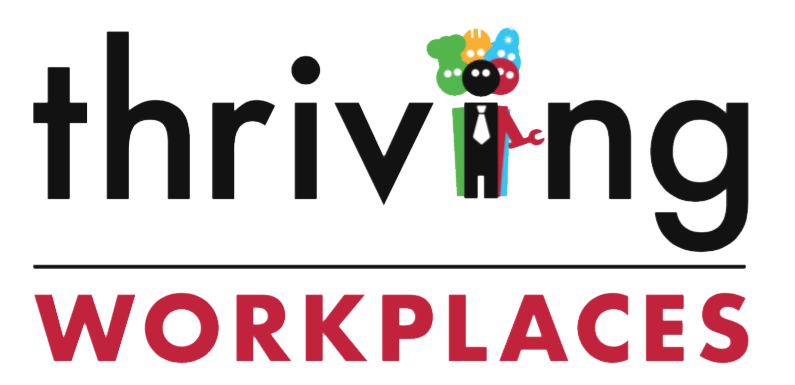
12 Jul Food for Thought During COVID? (From June 2020)
Below are some key areas businesses need to think about in order to be transparent, trusting and successful in reshaping their company’s future:
Communication
Supporting Physical Safety
Physical Environment
Supporting Mental Health and Wellbeing
I’ll only briefly touch upon each point, hopefully encouraging you to think about your workplace and its stance in ensuring you stay COVID free. But, before I go on, know that it is normal to feel apprehensive going back to work no matter your role.
Communication
Goes a very long way. Being clear and concise with relevant health information is very important when wanting to relay any operational changes to the workforce. Following government guidance, it is necessary to update your workforce on any apparent changes to the way in which the organisation will run. Boris’ frequent weekly speeches and the daily brieifings have outlined restrictions which have impacted everyone on both professional and personal levels. We highly recommend to not assume all workers would have listened/read the guidance themselves (due to many varying reasons) so it’s paramount to digest that information for them and communicate what this means for ‘them’ and their ‘livelihoods’. Ongoing bulletins, updates, conversations etc are recommended to be sent out using the various communication platforms your company uses. Possibly ask yourself, is this the best method to provide important information? If not, ASK your workforce. Some communication methods you can choose from include:
Emails, Newsletters, Noticeboards, Intranet, Social Media, Telephone, WhatsApp, Bulletins, Virtual Meeting Apps etc.
Ensure all staff can access the information and are encouraged to leave feedback. Consider all staff’s computer literacy and technological skills and accommodate this when needed. Consistent communication across the board to all employees, especially if they are based at home for the foreseeable future is key. I mean, who wouldn’t want to work in an organisation with a transparent, honest, welcoming and trusting culture where we can all learn from one another? It’s the dream.
Supporting Physical Safety
Before welcoming back your version of normality, as per government guidance ‘ensure a COVID-19 Risk Assessment is carried out to identify sensible measure to control all risks in your workplace‘. This seems a very obvious thing to do but conducting it while taking all measure into account is paramount. It is recommended as best practise to ‘encourage workers to be involved in assessing risks and the development and review of all policies. This creates a culture where relationships are based on collaboration, trust and joint problem solving – https://www.hse.gov.uk/news/working-safely-during-coronavirus-outbreak.htm
These COVID-19 Risk Assessments will indeed inform operational management of the necessary adaptations needed to ensure the physical safety of workers is met. How you take this forward is dependant on your business and production lines. Providing correct PPE/RPE equipment, including hand-sanistisers, clothing, masks, aprons etc is crucial. More information can be found regarding this here: https://www.hse.gov.uk/toolbox/ppe.htm?utm_source=hse.gov.uk&utm_medium=refferal&utm_campaign=coronavirus&utm_term=ppe&utm_content=home-page-popular and https://www.hse.gov.uk/news/face-mask-ppe-rpe-coronavirus.htm
Further guidance surrounding social distancing can be found online but it is important to note that, when applicable, if staff can work from home within your organisation’s framework, they should be encouraged to do so. Introducing social distancing procedures and communicating this with your workforce is vital in keeping your workplace COVID free for those that are required to be on-site.
Physical Environment
This leads on to the physical environment you’re asking your staff to work in. Whilst we are by no means Health and Safety professionals and don’t have the authority to dictate what should be done, we are aware that some procedures may need to be implemented. Things such as keeping the previously mentioned social-distancing in place via introducing one-way flow systems, using back-to-back or side-side working rather than face-to-face whenever possible and if applicable, using screens and barriers to separate people from each other. Hazard tape outlining areas that are off-bounds have become mandatory. Regulating these high traffic areas including corridors, lifts, turnstiles and walkways will help to maintain social-distancing. A lot of these changes will physically impact the environment, however having teams organising working shift rotas will be beneficial also. Staggering arrival and departure times through shift patterns will help to see a proactive approach in managing your staff, acknowledging also that their health is of upmost importance. Reducing the number of people each person has contact with by using ‘fixed teams’ or ‘partnering’ also reduces unnecessary social interaction which could spread the virus.
More frequent chances to wash hands should be given to all staff, alongside more hand-washing stations. Designating clean and dirty areas to prevent cross contamination is highly recommended ensuring signage is used appropriately to highlight this. If you ever feel unsure ask yourself, ‘would I feel completely comfortable working like this?’. However it is also best practise to involve H&S reps and professional bodies to provide insight.
Review alongside Government Guidance proportions of clinically extremely vulnerable individuals and clinically vulnerable individuals with particular attention being paid to risk factors, social distancing, home-working and carers within your workforce. Guidance can be found here: https://www.gov.uk/guidance/working-safely-during-coronavirus-covid-19/factories-plants-and-warehouses (Section 2.1)
Supporting Mental Health and Wellbeing
Possibly up there with the hardest to help facilitate when staff have been worked to the bone, furloughed or made redundant. As I’ve banged on about before time and time again, we ALL have mental health, it’s just a question of how well is it being managed at the moment? Are you taking the necessary steps to help support your mental health, allowing it to resonate in the positive part of your continuum or unfortunately have you allowed anxieties and negative coping strategies to take the steering wheel? Either way, supporting yourself through these times can be challenging so thankfully government guidance has stipulated workplaces give ‘support for workers around mental health and wellbeing. This could include advice or telephone support’. As an organisation who wants to take mental health issues and disorders seriously and validate each worker that may be struggling, there are many things you can do to support:
- Ensure you have staff trained in Mental Health First Aid. Having staff equipped with the tools and knowledge to support someone, especially in a crisis is vital. These aiders can provide guidance and support via video calls and telephones if comfortable. Organising a wellbeing committee to take forward wellbeing initiatives is highly recommended also. If you’re lucky enough to employ an EAP (Employer Assistance Programme) within your company that offers counselling and advice, make it known throughout your workforce by publicising it again, ensuring it is accessible to everyone who is employed.
- Even though face-to-face delivery of training has been halted for the time being, seeking virtual online courses is the next best thing. MHFA England, MIND, ASIST are still running online courses and workshops. Us here at Thriving Workplaces are also offering MHFA training, resilience workshops and mental health awareness sessions.
- Have regular check-ins with teams and individuals. Allowing staff a ‘safe space’ to exercise their insecurities and fears about going back to work will help to not only highlight any procedures and solutions you haven’t thought of, but will also provide a soundboard of security for that person who is struggling. Some times all we need is for someone to listen, reassure and guide us into thinking more rationally. It gives management a chance to reduce fears by promoting what has been done to make staff safe. Redundancies will also be the elephant in the room for all involved however keeping a clear pathway of communication will help to reassure staff/keep them in the loop of all ongoing changes.
- As previously mentioned, we are not Health and Safety professionals however we can offer guidance around health and wellbeing opportunities for your staff. Seeking out these opportunities will be one of the key components in changing your culture. Actively responding to staff needs when appropriate demonstrates great leadership, compassion, and good problem-solving skills to name a few. Offering flexible working and reasonable adjustments especially during this period where fears and anxieties can come to a head is best practice and something managers should strive for when leading their teams. If this can work in your organisation, it may also lend itself to help with staggering shifts and site management.
- Alongside this, upskilling yourselves in mental health management. You have to pay more attention to mental health as a manager because it affects your staff just as much, possibly more than physical ailments. 1 in 6 people of working age will suffer from poor mental health/mental health disorders in their lifetime without taking into account worldwide pandemics. There could be a time where stress, anxiety, depression etc will affect productivity and you may also see a soar in absence levels. It is extremely important for management to upskill their knowledge in mental health management in order to provide guidance and support for staff members when necessary. Welcoming difficult and at times slightly uncomfortable conversations allows both parties to openly discuss problems and search for solutions together. Vulnerable employees will need ongoing consultation more so, possibly needing redeploying. This can throw many challenges into the mix such as redefining job roles and responsibilities, locations and pay so all levels of SLT’s and management need to be involved alongside said vulnerable employee in the decision making.
I could go on and on about what recommendations Public Health and the government have but nevertheless, feelings of uncertainty, fear and confusion are still apparent and are still rightfully felt. As a Workplace Health Facilitator, who can only recommend and suggest best practice, I believe the more proactive you are in seeking out staff’s feelings, making your workplace safe, supporting both on-site and home workers with their physical and mental wellbeing and communicating all the above to them, the less these feelings will impact our day-to-day working lives. Hopefully enabling staff to conduct themselves with less panic and feel more comfortable to work in these new environments. That’s not to say the panic isn’t real and isn’t being heard though, I believe there needs to be a balance with all views and feelings being exercised and validated.
My intention is to pepper these thoughts into your plans moving forward and encourage you to ask yourself ‘are you a workplace that feels prepared?’ Chances are you don’t and that’s okay, here is where we can step in and explore with you ways in which we can help.


